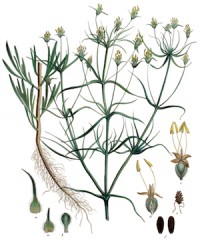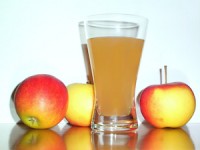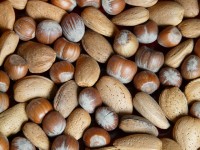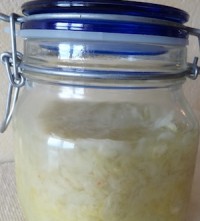Laxatives in conventional and natural medicine
As you can find on the Internet (5), broadly, categories of treatments include bulk-forming products, lubricants, stool softeners, osmotic agents and stimulant laxatives. Products available are a mix of naturally-derived and synthetic products. Some of the most popular laxatives are naturally-derived from the senna plant, psyllium seed, etc. Both natural and synthetic products have very remarkably side effects.
 Fiber is a bulk-forming product. Fiber works by increasing the water content and bulk of the stool, which helps to move it quickly through the colon. When ingesting fiber supplements or medicines, such as Agiolax, it's essential to drink enough water to minimize the possibility of flatulence and a possible obstruction. (5)
Fiber is a bulk-forming product. Fiber works by increasing the water content and bulk of the stool, which helps to move it quickly through the colon. When ingesting fiber supplements or medicines, such as Agiolax, it's essential to drink enough water to minimize the possibility of flatulence and a possible obstruction. (5)Aloe vera, Psyllium and fenugreek are also well-known herbal bulk laxatives.
Abdominal cramping, bloating or gas can occur when we are abruptly increasing or changing the dietary fiber intake. (5)
Lubricant laxatives, such as Lansoyl make stools slippery. The mineral or vegetable oil within these products adds a slick layer to the intestine's walls and stops the stool from drying out. (5) Mineral oil can absorb fat-soluble vitamins from the intestine (A, D, E, K), avoid the absorption of several nutrients in the body and lead to a deficiency of mineral and other nutrients. Mineral oil is not supposed to reach our lungs, or it can cause serious tissue damage, a condition called “lipoid pneumonia”. This is a rare incidence, but could happen if mineral oil “goes down through the wrong pipe”.
Mineral oil, also called “liquid paraffin”, is a derivative of petroleum. Crude oil is distilled into a refined product: gasoline. Mineral oil is a byproduct of that distillation process. It is therefore very cheap to make, and is produced in large industrial quantities.
Castor oil is a lubricant laxative as well as stimulant laxative, with very similar side effects.
 Stool softeners or emollient laxatives contain docusate, a surfactant that helps to "wet" and soften the stool. (5) Docusate salts are thought to act as detergents in the intestine, reducing surface tension of liquids and fatty substances in the intestine, thereby softening stool consistency. Stomach pain, diarrhea, or cramping may occur. Irritated throat (with liquid or syrup forms) may also occur. Rectal bleeding is unlikely but a serious side effect. (6)
Stool softeners or emollient laxatives contain docusate, a surfactant that helps to "wet" and soften the stool. (5) Docusate salts are thought to act as detergents in the intestine, reducing surface tension of liquids and fatty substances in the intestine, thereby softening stool consistency. Stomach pain, diarrhea, or cramping may occur. Irritated throat (with liquid or syrup forms) may also occur. Rectal bleeding is unlikely but a serious side effect. (6)The osmotic laxative's mission is “the wetter the better”. These products include all hydrating agents that draw fluids into the intestine from the surrounding tissues: glycerin suppositories, sugar alcohols, saline salts, lactulose (such as Duphalac), and polyethylene glycol (PEG). (5) Gas, bloating, burping, stomach rumbling/pain, nausea, and cramps may occur. Other unlikely but serious side effects may occur: diarrhea, vomiting, muscle cramps/weakness, irregular heartbeat, mental/mood changes, seizures. (7)
Saline laxatives are non-absorbable osmotic substances that attract and retain water in the intestinal lumen, increasing intraluminal pressure that mechanically stimulates the evacuation of the bowel. Magnesium-containing agents also cause the release of cholecystokinin, which increases intestinal motility and fluid secretion. Saline laxatives may alter a patient's fluid and electrolyte balance. (5) Epsom salt is magnesium sulfate.
 Sorbitol and xilitol are sugar alcohols. They have a laxative effect because sugar alcohols are not fully broken down during digestion. The effect depends upon the individual, and it can lead to diarrhoea in some cases.
Sorbitol and xilitol are sugar alcohols. They have a laxative effect because sugar alcohols are not fully broken down during digestion. The effect depends upon the individual, and it can lead to diarrhoea in some cases.Apple juice, pears, prunes and dates contain the sugar sorbitol, too.
Osmotic laxatives’s side effects are gastrointestinal diseases: bloating, colic, nausea, vomit, diarrhea, etc. (5)
Stimulant Laxatives, such as Dulcolax, work by stimulating the lining of the intestine, thereby accelerating the journey of stool through the colon. Stimulant laxatives also increase the hydration of stool. Do not use stimulant laxatives daily or regularly. This type of laxative may weaken the body's natural ability to defecate and cause laxative dependency by damaging the haustral folds of the colon, making the user less able to move feces through the colon on their own. One more caveat: the stimulant laxatives may cause cramping and diarrhea. (5)
Purgative laxatives are stimulant laxatives that contain anthraquinones, strong and irritating chemical compounds that force the bowels to evacuate, with the same possible side effects. This group includes aloe, buckthorn, cascara sagrada, rhubarb, and senna.
Spices like organic cayenne pepper, ginger and turmeric act as stimulant laxative. For example, Cayenne pepper stimulates the digestive tract, increasing the flow of enzyme production and gastric juices. They have also an antibiotic effect, killing both the “good” and “bad” bacteria in the gut. (8)
Dandelion root is a mild laxative.
Laxatives in food
On the other side, food containing magnesium is a gentle laxative. When feeling stressed, anxious or worried, magnesium relaxes the colon walls. Magnesium reduces tension on the walls of your colon which allows for a normal peristaltic action. Also, magnesium attracts water which means that more of it gets to the colon, only a good thing regarding the digestive tract because water makes the stools softer. Regularly including magnesium rich foods in our diet is just good housekeeping and will keep things regular. All kind of seeds (squash, pumpkin, watermelon, flax, sesame, sunflower) and nuts (brazil, almonds, cashews, pine-nuts, etc.) are rich in magnesium, fat and fiber. But these products are very allergenic so it’s better avoiding eating them every day.
All kind of seeds (squash, pumpkin, watermelon, flax, sesame, sunflower) and nuts (brazil, almonds, cashews, pine-nuts, etc.) are rich in magnesium, fat and fiber. But these products are very allergenic so it’s better avoiding eating them every day.Prunes and dates are also an effective colonic stimulant, but they are very rich in sugar so they can contribute to a yeast overgrowth.
As previously stated, all fresh fruits and vegetables are laxatives because of their water and fiber content. Fats and oils can also help.
Apple juice, pears, prunes and dates are very rich in sorbitol, so they are laxative.
Drinking warm water as first thing in the morning can help in some cases.
Enemas, hydrotherapy and oxygen-therapy
 Colonic hydrotherapy (also known as colon cleansing or colonic irrigation) is the process of injecting water, sometimes mixed with herbs, into the colon via a specially designed tube inserted into the rectum with the aim of removing feces and toxins from the colon and intestinal tract. Colonics cleanse the entire length of the colon, while in the case of self-administered enema, water only reaches part of the descending colon and sigmoid colon.
Colonic hydrotherapy (also known as colon cleansing or colonic irrigation) is the process of injecting water, sometimes mixed with herbs, into the colon via a specially designed tube inserted into the rectum with the aim of removing feces and toxins from the colon and intestinal tract. Colonics cleanse the entire length of the colon, while in the case of self-administered enema, water only reaches part of the descending colon and sigmoid colon.One negative theory associated with colonic hydrotherapy is that the beneficial gut bacteria is partially "washed out" by the process, as well as bad bacteria, so colonic hydrotherapists recommends patients to take probiotics after their treatment.
There are reports of people experiencing reduced constipation and general digestive improvements following colonic irrigation by oral administration, as well as improved vitality, better skin and an overall energy boost. (9)
Sheila Shea, an experienced hydrotherapy therapist, says “Colon hydrotherapy, colemas and/or enemas can be very helpful for constipation to help restore tone, reposition the intestines, relax muscles, create successful bowel habits and loosen and remove waste. The therapist or individual can use abdominal massage, lymph drainage, breath techniques and aromatherapy oils to accompany the intestinal hydrotherapies.”
If the origin of the constipation is candidiasis, parasites or gut dysbiosis, then an oxygen therapy may be a good solution. A number of people report good results using a variation of oxygen therapies for extinguishing candida. Oxygen and ozone may be rectally infused for candida. Scientific studies have proven that Ozone, properly introduced into the body in repeated applications inactivates viruses, bacteria, fungi, protozoa and carcinomas in diseased cells. Rectal insufflation is considered a safe and simple method of ozone delivery that is particularly suited to the elderly, to babies and young children. Other methods of oxygen-therapy, such as direct intravenous injection are considered dangerous and without clinical advantages. (10)
Probiotics
Probiotics are beneficial microorganisms sold in capsules, which help restore or maintain natural balance of healthy bacteria in the intestines. Many people use probiotics as natural laxatives, while others take them to prevent or treat diarrhoea. In general, probiotics have motility regulatory effects.Probiotics convert prebiotic fibres into short chain fatty acids which lubricate the gut and naturally stimulate peristalsis, and also convert fibres into acid lactic that may cause lowering in the pH of the intestines and increase muscle contractions along the colon. Probiotics achieve the same effect than osmotic and stimulant laxatives but in a natural way, and don’t irritate the gut in the process.
There is no single strain of probiotics to relieve constipation; what is considered to be an effective probiotic for constipation may not be the same with another person. Some strains such as bacillus subtilis, several strains of bifidobacterium, several strains of lactobacillus use to help most of the people.
Dr. Campbell-McBride states that “unfortunately most supplemental probiotics do not settle or colonise on the gut wall. In fact, probably the only time in our lives we have to populate our gut with beneficial bacteria is at birth, when the gut is sterile. So probiotics do their work in the lumen of the gut and then come out of the system.” She adds that “we have not yet found a way to replace the pathogens on the gut wall with beneficial bacteria. So it’s need to carry on taking probiotic indefinitely.”
 Another issue is the question about the survival of probiotics until they get to the intestine. Dr Campbell-McBride says that “many of them do not survive the stomach acid… but, an important point to make here is that even dead, probiotic bacteria will do a lot of good in your gut”
Another issue is the question about the survival of probiotics until they get to the intestine. Dr Campbell-McBride says that “many of them do not survive the stomach acid… but, an important point to make here is that even dead, probiotic bacteria will do a lot of good in your gut”Lacto-fermented foods are also a kind of probiotics, much more natural than supplementation. Dr. Campbell-McBride states: “Supplements of probiotics settle in the upper parts of the digestive system and generally do not make it all the way down to the bowel, while fermented foods will carry probiotic bacteria all the way down to the end of the digestive system.”
Other nutritionists have a different point of view. Summer Bocks says that sauerkraut “is one of the only foods that contains natural bacteria that inoculate and live within your intestines.” (11) She argues that the cabbage where the probiotics are carried, protect them and give them a “house” and nourishment to get to the intestine and settle.
Other therapies
There’s a large number of therapies that can relieve constipation: Cranial-Sacral, Osteopathy, Massage, Visualization and Meditation, etc.Conclusion
There are many temporary remedies for constipation but all of them have side effects. The only way to avoid constipation permanently is treating the causes. As described in the first part of the article, there are many different theories that explain the origin of constipation; often different conditions appear at the same time, such as intestinal dysbiosis and hypothyroidism. The tests can help to determine these causes.Clearly there are many factors that affect this condition, but maybe the most important one is food. A diet that is rich in fruit and vegetables helps regulate the intestinal transit, while meat and refined flour impede its performance. The role of other foods in the intestinal transit is not clear, so it is always best to see for yourself.
Thus, increasing the amount of fruit and vegetables is very important, but it will surely not be enough, and you must avoid foods that are causing constipation. In my practice I have seen many cases where constipation disappeared by changing the diet, removing junk and industrial foods, sugars, cereals that contain gluten and dairy products from someone’s diet. In other cases, the situation improved considerably, but some constipation still remained, and only by decreasing or even eliminating meat or starches could the improvement get completely standard. In those cases, there was a gut flora dysbiosis, where the opportunistic bacteria were thriving on that food because the person was intolerant to these products.
Regarding therapies, I would like to highlight the benefits of colon hydrotherapy, the liver detox, the ozone-therapy as part of the intestinal flora-restoring therapy, and therefore regulating the intestinal transit.
References:
(1) “Gut and Psychology Syndrome”, Dr. Natasha Campbell-McBride
(2) “The Life Science Health System”, T.C. Fry
(3) “The Amazing Liver & Gallbladder Flush”, Andreas Moritz
(4) “Ecosystème intestinal & Santé optimale”, Dr. Georges Mouton
(5) “Safely Using Laxatives for Constipation”
(6) “Docusate Sodium”
(7) “Lactulose”
(8) “ANTIMICROBIAL EFFECTS OF SPICES AND HERBS”
(9) “Effect of colonic irrigation on the bowel habits of constipated young women”, Sakamoto M, Fukai K, Mine H., Kawasaki Journal of Medical Welfare, Vol.9, No.1, 2003 9-14
(10) “OZONE Therapeutic Remedial Uses”
(11) “The Power of Probiotics for Digestive & Immune Healing”













